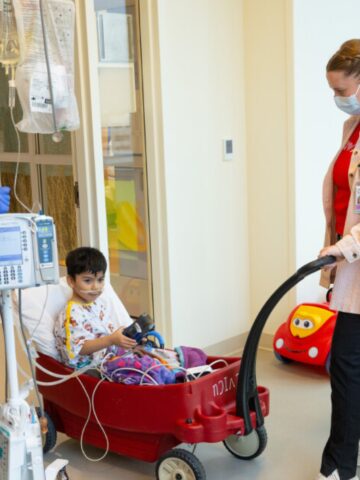As supervisor of CHOC’s Resuscitation Program, Jennifer Hayes, RN, preaches the importance of preventing cardiac arrest, promoting early recognition and management of a deteriorating patient, providing high-quality CPR, and ensuring the best post-arrest care.
She lobbied for the creation of the position, one that isn’t common at pediatric hospitals, and got it in July 2017.
A fateful night
On the evening of Nov. 9, 2017, after enjoying dinner with her husband at a favorite restaurant, Jennifer would take her experience with cardiac arrest to a completely new level – one she never imagined and never would have wanted.
Thirty weeks pregnant, Jennifer had just put her 3 1/2-year-old son, Matthew, to bed.
Her husband, Kyle, heard the thump from downstairs.
He found Jennifer lying face down near Matthew’s bed, shaking.
At first, Kyle thought she was laughing after falling off the bed.
But Jennifer, who was 34, was having a seizure.
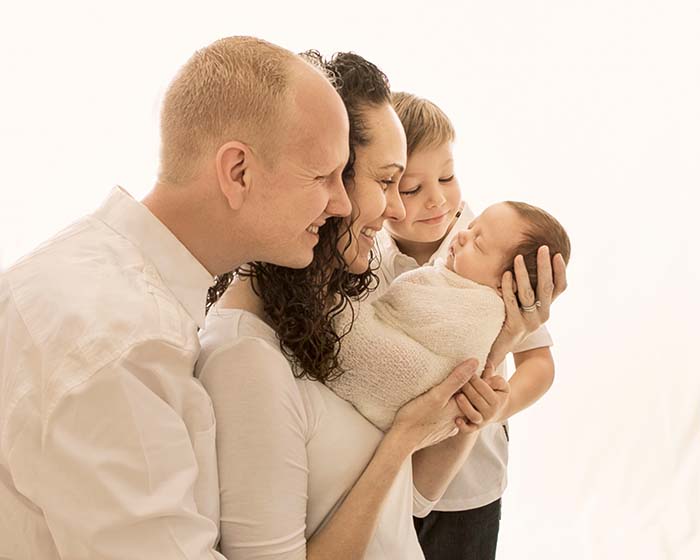
Kyle called 911. He quickly realized that Jennifer wasn’t just having a seizure; she was unconscious and not breathing. The dispatcher talked him through the proper steps of CPR. He ran to get their neighbor, a police officer who was skilled at CPR, to take over.
Five minutes later, emergency personnel arrived.
Jennifer’s heart was experiencing ventricular fibrillation, a common irregular heart rhythm – or arrhythmia – associated with cardiac arrest.
The lower chambers of her heart were beating chaotically but not pumping blood.
Jennifer was not getting oxygen to her heart or brain – and neither was her baby.
15 minutes without a heartbeat
Only 10 percent of people who suffer cardiac arrest outside a hospital survive. Those odds improve significantly if bystander CPR is started immediately.
Fifteen minutes elapsed between the 911 call and when Jennifer’s heartbeat started again. She was rushed to the closest hospital near her home and then was airlifted to UCI Medical Center (UCIMC) for a higher level of care.
Doctors performed quick but extensive testing to determine the cause of her arrest, and its effect on her baby. Doctors suspected it might be eclampsia, a rare but serious condition where high blood pressure results in seizures during pregnancy or after birth.
Doctors decided to perform an emergency Cesarean delivery and Micah was born 10 weeks early. He weighed 3 ½ pounds. His body was limp and gray, and he wasn’t breathing. He was immediately intubated to help him breathe and was transferred to the neonatal intensive care unit (NICU) at UCIMC.
Jennifer was taken to the intensive care unit where her body was cooled for 24 hours. Induced therapeutic hypothermia is commonly used to treat patients in a coma who have survived cardiac arrest.
The following day, Jennifer was extubated and taken off a ventilator, the device that had been supplying her with oxygen when she wasn’t able to breathe on her own.
When Jennifer woke up, she felt confused and experienced short-term memory loss.
“I just kept saying, ‘This is not how this was supposed to go,’” she says.
Jennifer meets Micah for the first time
Jennifer met Micah for the first time a few days after he was born. She stuck her hand in his isolette and rubbed his back. She told him, “Mommy’s here. You’ll be OK.”
Meanwhile, she was thinking: “Neither one of us is supposed to be alive after what we’ve been through. This is nothing short of a miracle.”
Jennifer went home eight days later, with an external wearable defibrillator to monitor her heart rate and rhythm. At the time, doctors hadn’t yet determined the cause of her cardiac arrest.
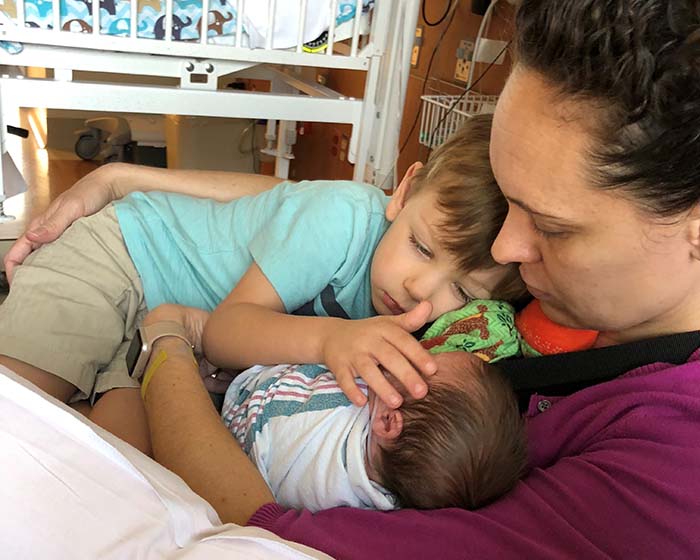
The same day Jennifer was discharged, Micah was transferred to CHOC.
“UCI was amazing, and we received great care there,” Jennifer says. “But the day we transferred to CHOC, as soon as I walked through the double doors, I felt instant peace. I knew we were in a place that would take incredible care of my son.”
CHOC staff member to CHOC parent
Micah was admitted to CHOC’s neonatal intensive care unit (NICU), which had just opened with all private rooms.
“It was such a huge blessing to have our own space,” Jennifer says. “One of my big goals for Micah was to be able to go home nursing. I got to stay overnight with him in the unit and work on that goal. The staff supported us 24/7 to develop the skills he needed to make that goal a reality.”
Micah would spend 71 days in the NICU before he was healthy enough to go home. During the family’s NICU stay, they interacted with a variety of physicians and nurses.
“Our primary nurses knew Micah as well as I did. I trusted my baby’s life to them,” Jennifer says. “They were my shoulder to cry on, my cheerleaders. I would not have gotten through this experience without them.”
Wanted to teach kindergarten
Growing up, Jennifer wanted to be a kindergarten teacher but her interest in nursing was sealed after she took an anatomy and physiology class her senior year in high school.
“My grandmother always wanted to be a nurse, but she was never able to,” she says.
Jennifer’s passion for cardiac arrest prevention and care dates to May 2004, when she began her clinical rotation in CHOC’s pediatric intensive care unit (PICU) while a junior in the nursing program at Azusa Pacific University.
On her first day on the clinical rotation, Jennifer helped care for a child who had choked and suffered a cardiac arrest, a condition where the heart suddenly stops beating because of an abnormal rhythm. She helped perform brain death testing on the patient and tried to comfort his family.
He didn’t survive.
But Jennifer knew she had found her calling, working with the sickest of patients and committing herself to improve outcomes of cardiac arrests outside the hospital.
Jennifer earned her Bachelor of Science in nursing in 2005 and started working as a bedside nurse in CHOC’s PICU in February 2006.
“I loved the critical thinking aspect of having to monitor so many things,” she says. “I enjoyed the complexity of it.”
Jennifer transitioned into an educator role in the PICU in May 2011 and, one year later, earned her Master of Science of nursing from APU. Her final paper examined the role of nurse practitioners in improving bystander CPR rates in children.
“I had a huge stack of articles about cardiac arrest,” Jennifer says. “I loved writing it. I was such a nerd.”
In 2013, Jennifer was tapped to oversee CHOC’s Code White Committee, which manages the resuscitation program.
The receiving end of care
Some of the NICU nurses who cared for Micah at CHOC had once been Jennifer’s students. While an educator in the registered nurse residency program, Jennifer had been tasked with training recent nursing graduates who were transitioning to become professional pediatric nurses.
“It was so cool to see what amazing nurses they had become and flourished into,” she says.
Being on the receiving end of care was new for Jennifer.
“The hospital I loved as an employee — a place we live our mission and provide top-quality care — all of a sudden I was on the other side, watching my child receive the top-quality care,” she says.
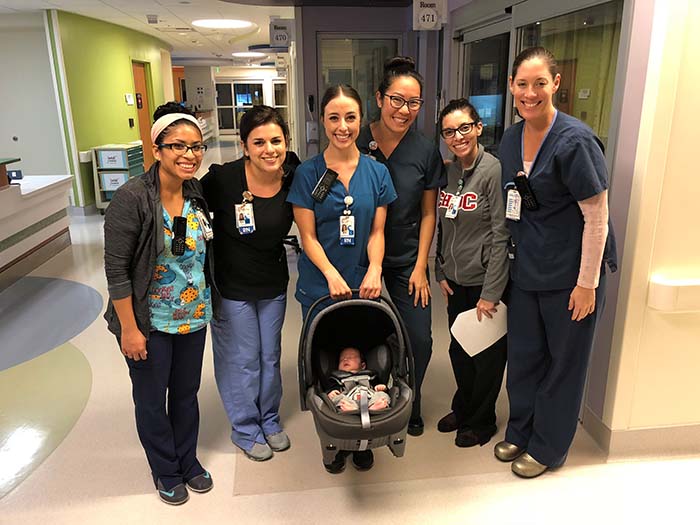
Staff regularly went above and beyond for Micah – like bringing in a music therapist to calm him during vaccinations – but the care extended to his brother Matthew as well.
During night rounds, an attending physician took time to make paper helicopters with Matthew. Staff would also take Matthew by the hand to show him where he could choose linens for his baby brother’s crib in the NICU.
Home at last
Finally, back home, Micah continued to develop as normal.
Doctors ultimately determined Jennifer didn’t need a pacemaker. However, she has a loop recorder that monitors her heart rhythm, takes snapshots and sends them to her medical team. She sees a cardiologist annually for a checkup.
Ten months after her cardiac arrest and Micah’s birth, Jennifer returned to her role as the supervisor of resuscitation at CHOC.
“My goal is to give patients, in their most vulnerable times, the very best care and the best chance at a good outcome,” Jennifer says.
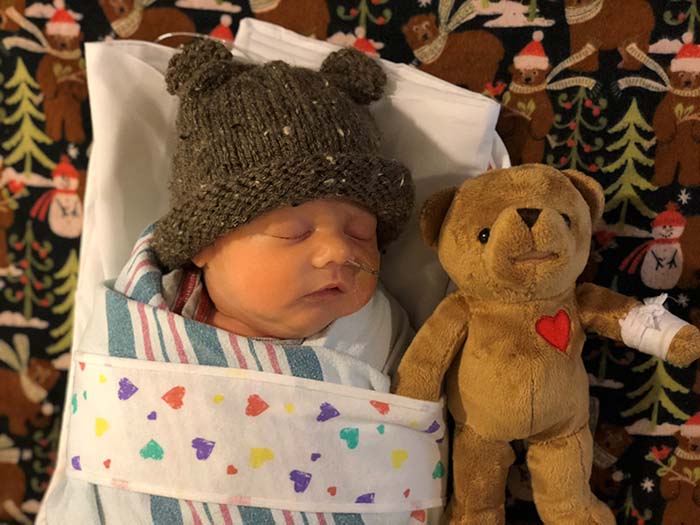
Since 2017, she effectively has educated 1,200 staff members on pre-arrest prevention of cardiac arrest. Jennifer also has developed an organization-wide “Watcher” program that has resulted in a 50% reduction in the non-ICU code rate, and she led a CPR quality improvement project that has resulted in a 10-fold increase in CHOC’s CPR quality and doubling of survival to hospital discharge over four years.
“I look at a lot of data in my work,” Jennifer says. “I never forget that every number is someone’s child. I was that number. My son was that number. I believe that every single one of our patients deserves the chance that Micah and I were given.”
Sharing her story
Jennifer shares her personal experience with cardiac arrest at conferences and educational events for clinicians. In December 2019, she was the keynote speaker at the Citizen CPR Foundation Cardiac Arrest Survivor Summit in Seattle.
She also has shared her story at conferences in Asia. Speaking about her experience, she says, has helped her healing journey. So has going back and thanking everyone who was part of her care: the dispatcher, neighbors, first responders, flight crew, nurses, and doctors.
“I didn’t want this experience to be in vain,” Jennifer says. “I wanted to focus on paying it forward. If my husband and I can share our story and empower one person to make a difference and get CPR training or inspire one organization to provide higher quality care and it saves a life, then this was all worth it.”
Learn more about critical care at CHOC



